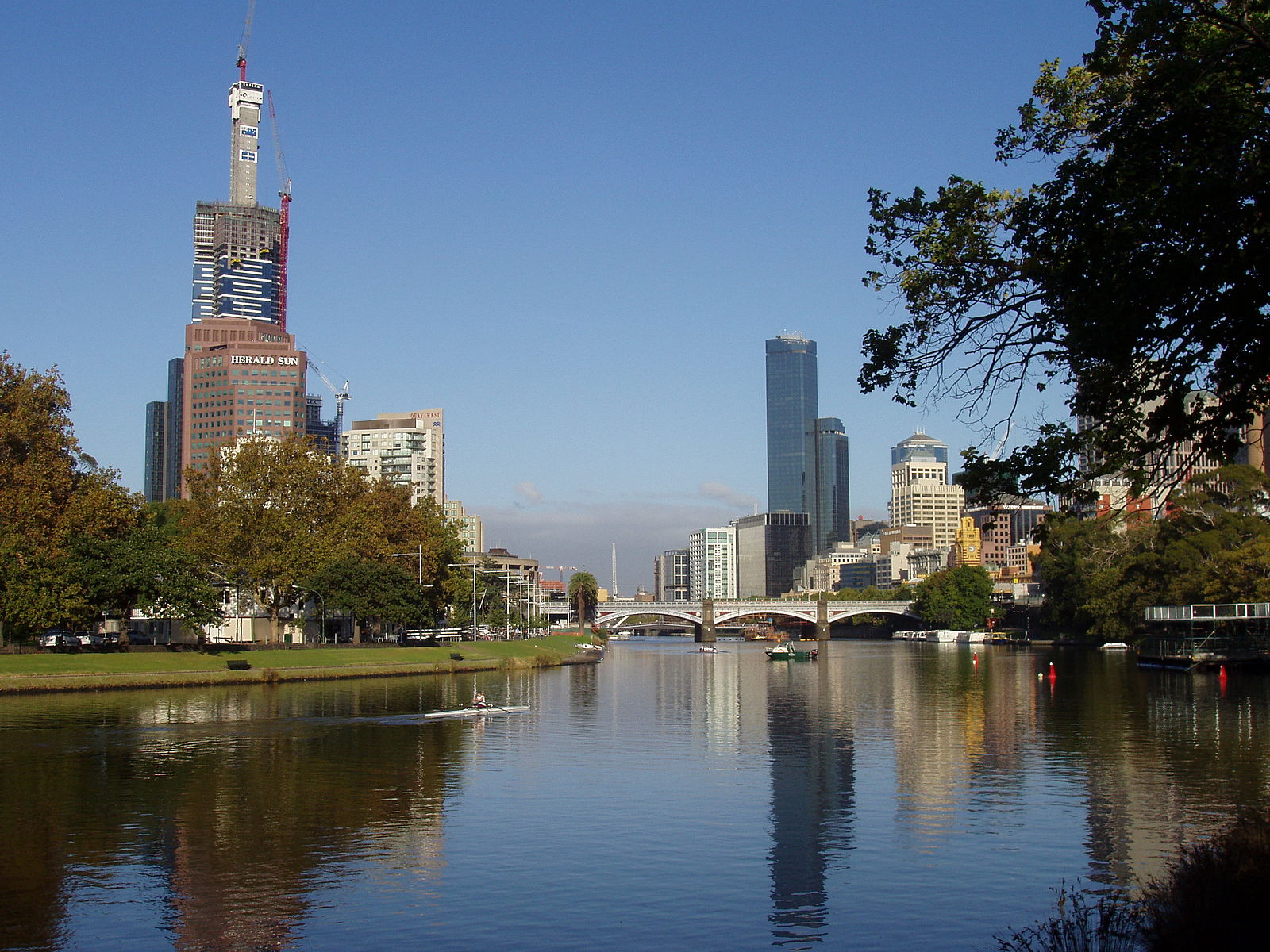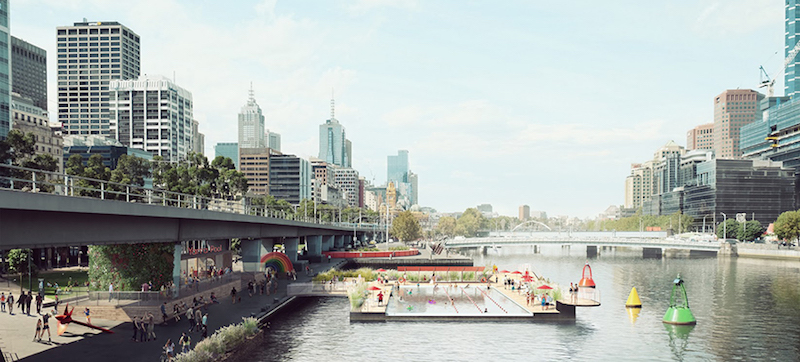Rivers are often times the more utilitarian of the different types of bodies of water. Oceans and lakes are thought of as fun places to partake in water sports, go for a swim, or just relax on their sandy beaches, and ponds are seen as serene and relaxing spots to go fishing or to sit back and enjoy the wildlife. Meanwhile, rivers are often viewed as the highways of the water world; they are connectors and pathways to something bigger and better. Boats and barges travel up and down them as they make their way to or from an ocean or lake leading to heavy traffic and plenty of pollution.
Sure, maybe we walk along riverwalks or enjoy lunch on an outdoor patio where the rushing water can be heard, but, thanks to the heavy water traffic and pollution, rivers are often only enjoyed as ambiance, not as a place to actually take a dip and cool down on a hot summer day.
Some cities, however, are trying to return these heavily polluted and trafficked rivers back into swimmable destinations for the enjoyment of locals and visitors alike. New York has a proposed floating pool for one of its rivers and river pools already exist in cities like Zurich, Berlin, and Paris, and now, the Yarra River in Melbourne, Australia is looking to join this list.
According to inhabitat.com, the non-profit organization Yarra Swim Co. is looking to make the heavily polluted Yarra River swimmable once more. One of the first major steps they are taking to achieve this goal is to work with Arup to develop a Yarra River pool. While, technically, swimming in the pool wouldn’t be the same thing as swimming in the Yarra, it would be the first step in bringing swimming back to the waterway.
The plans call for a self-contained pool that floats in the Yarra River, however, Arup and Yarra Swim Co. are looking into ways to filter and clean the surrounding water so that it can be used to supply the water in the pool, which is kind of like swimming in the river itself, right? Currently, Arup says there is a patent pending for this type of technology.
Yarra Swim Co. hopes the pool will help to change public opinion about the polluted waterway and be the push needed to rally people around the idea of cleaning the river for good. Ultimately, Yarra Swim Co. hopes the river can be cleaned thoroughly enough so the race to Prince's Bridge, which was once one of the largest swimming competitions in the world, can once again be held.
Funds to build the pool, which, in Australian dollars would cost around $6 and $8 million, may be raised through a combination of crowdfunding, sponsorships, and grants. If all goes according to plan, the pool could be open to the public by 2019 or 2020.
So while people may not be swimming in the Yarra anytime in the near future (at least, not without imbibing in a few rounds of liquid courage first), the pool, especially if the patent pending technology works, could be the first step in the overall process of making the Yarra River swimmable once again.

Related Stories
| Sep 30, 2011
Design your own floor program
Program allows users to choose from a variety of flooring and line accent colors to create unique floor designs to complement any athletic facility.
| Sep 16, 2011
Largest solar installation completed at Redskins' football stadium
On game days, solar power can provide up to 20% of FedExField’s power.
| Sep 12, 2011
First phase of plan to revitalize Florida's Hialeah Park announced
This is the first project of a master plan developed to revive the historic racetrack.
| May 25, 2011
Olympic site spurs green building movement in UK
London's environmentally friendly 2012 Olympic venues are fuelling a green building movement in Britain.
| Apr 11, 2011
Wind turbines to generate power for new UNT football stadium
The University of North Texas has received a $2 million grant from the State Energy Conservation Office to install three wind turbines that will feed the electrical grid and provide power to UNT’s new football stadium.
| Apr 5, 2011
U.S. sports industry leads charge in meeting environmental challenges
The U.S. sports industry generates $414 billion annually. The amount of energy being consumed is not often thought of by fans when heading to the stadium or ballpark, but these stadiums, parks, and arenas use massive quantities of energy. Now sports leagues in North America are making a play to curb the waste and score environmental gains.
| Mar 25, 2011
Qatar World Cup may feature carbon-fiber ‘clouds’
Engineers at Qatar University’s Department of Mechanical and Industrial Engineering are busy developing what they believe could act as artificial “clouds,” man-made saucer-type structures suspended over a given soccer stadium, working to shield tens of thousands of spectators from suffocating summer temperatures that regularly top 115 degrees Fahrenheit.
| Mar 11, 2011
University of Oregon scores with new $227 million basketball arena
The University of Oregon’s Matthew Knight Arena opened January 13 with a men’s basketball game against USC where the Ducks beat the Trojans, 68-62. The $227 million arena, which replaces the school’s 84-year-old McArthur Court, has a seating bowl pitched at 36 degrees to replicate the close-to-the-action feel of the smaller arena it replaced, although this new one accommodates 12,364 fans.














